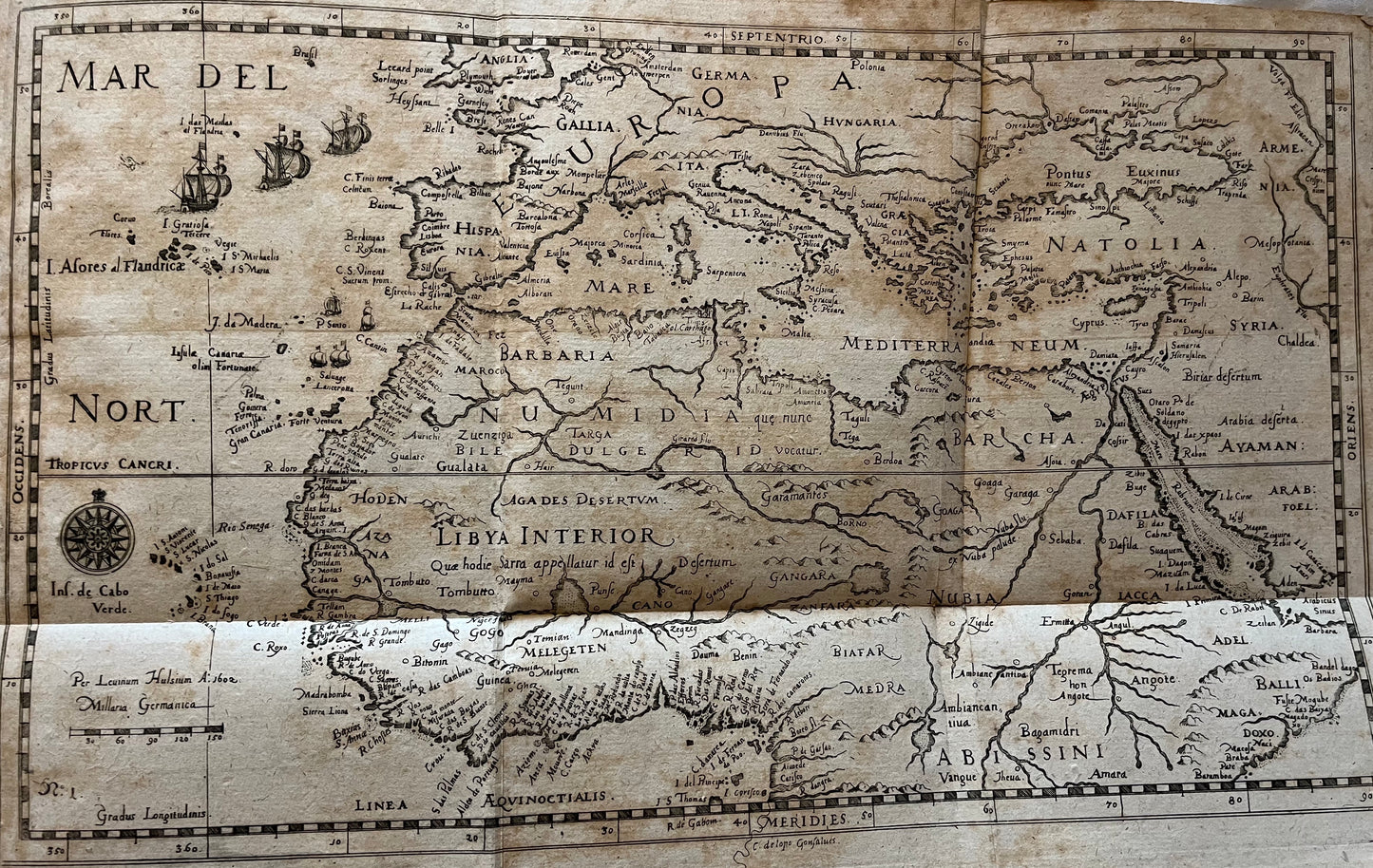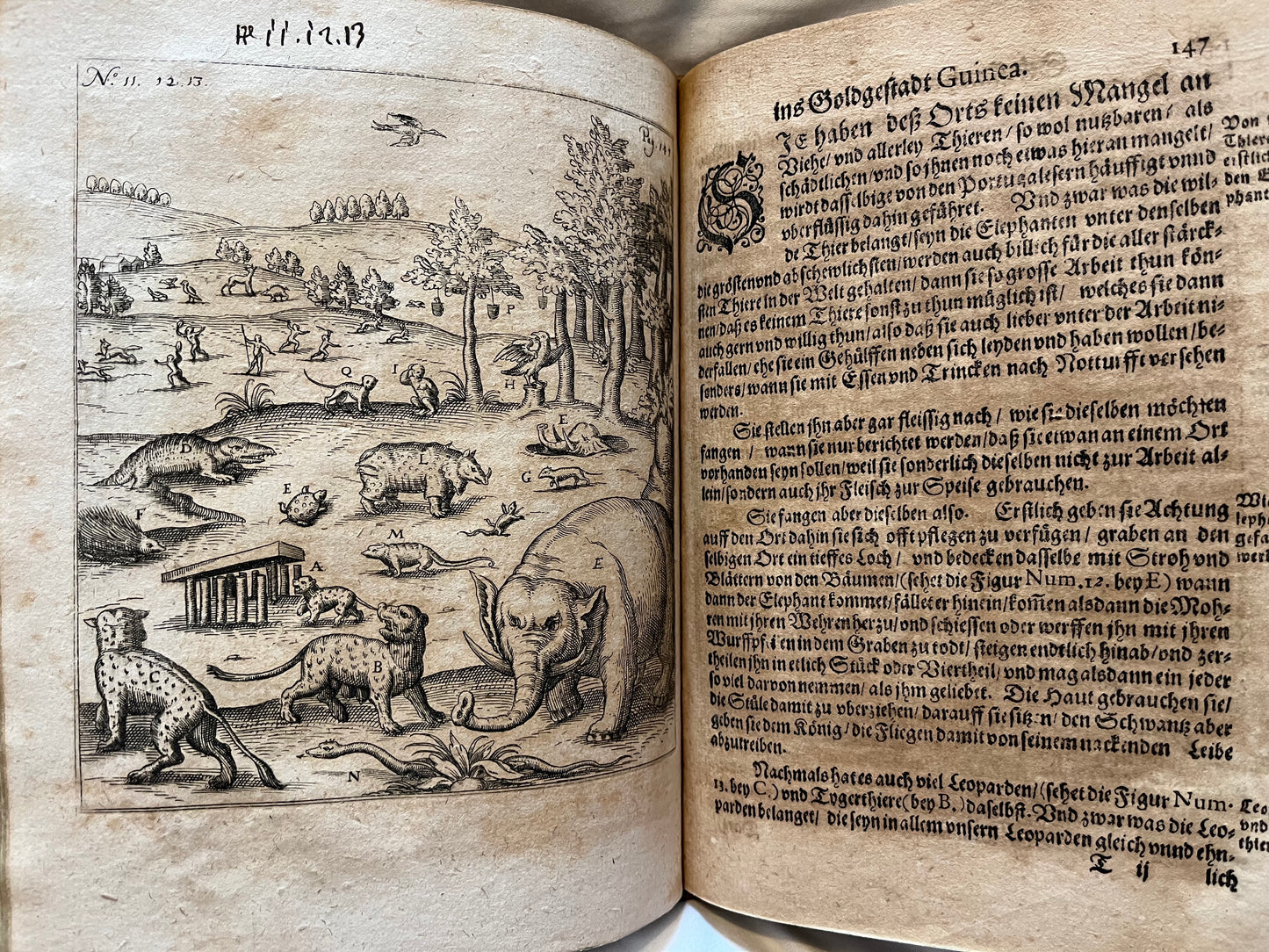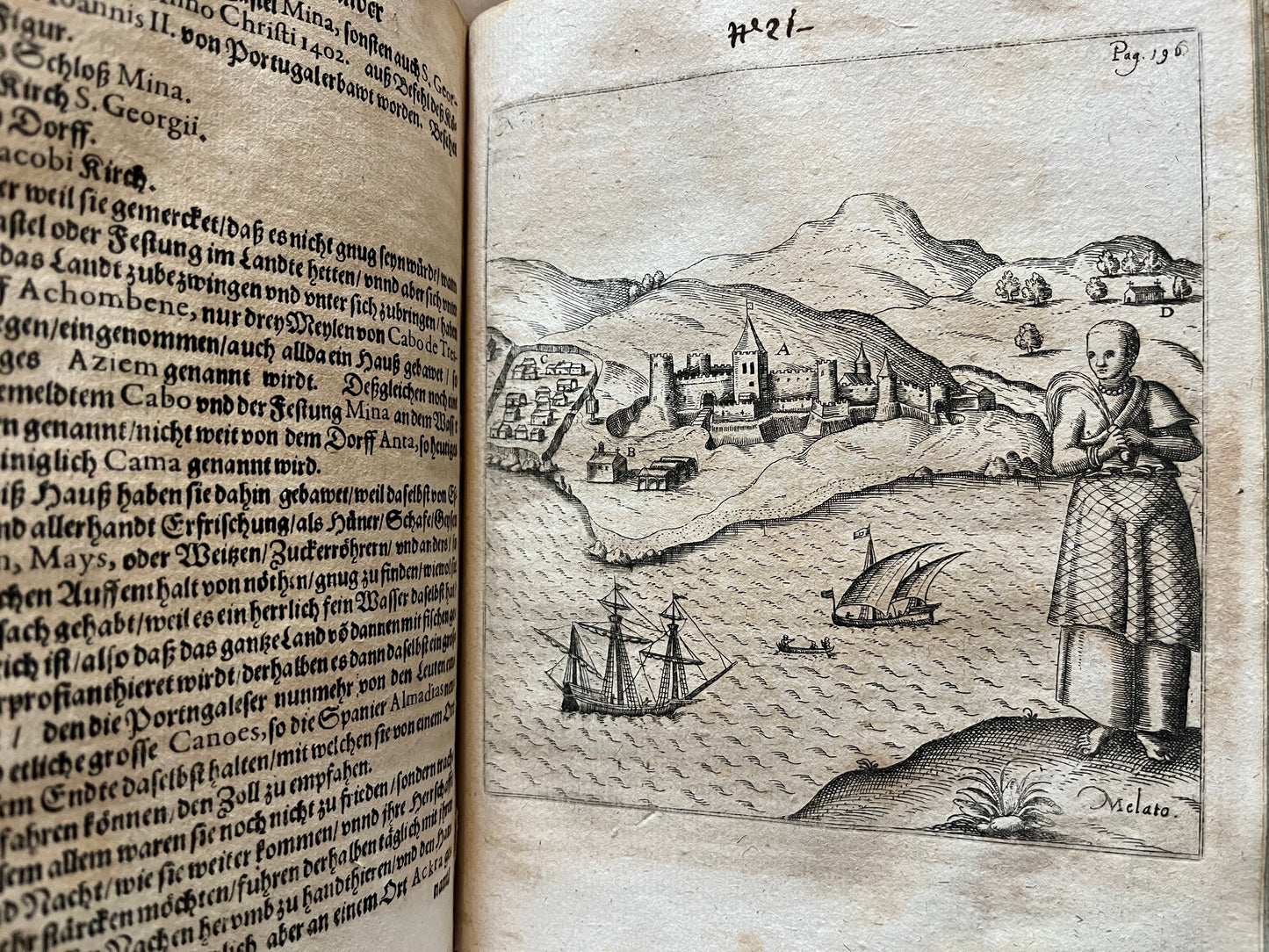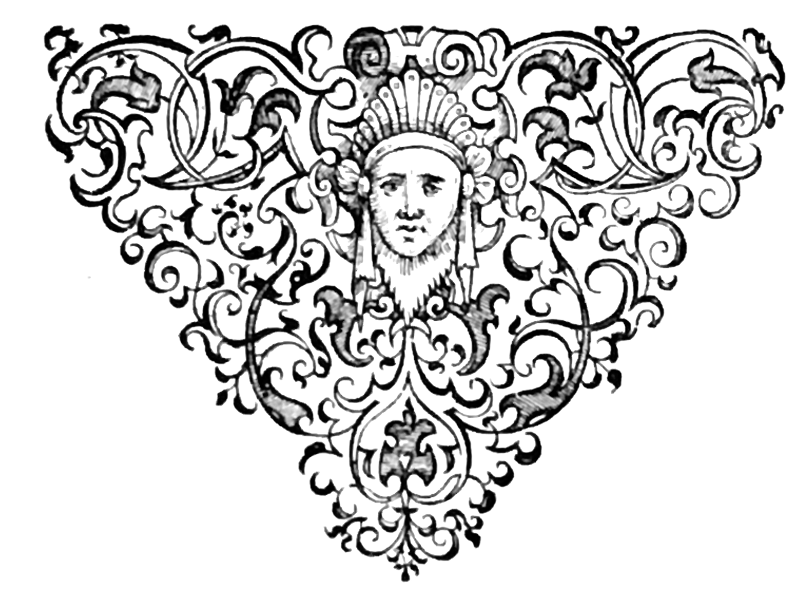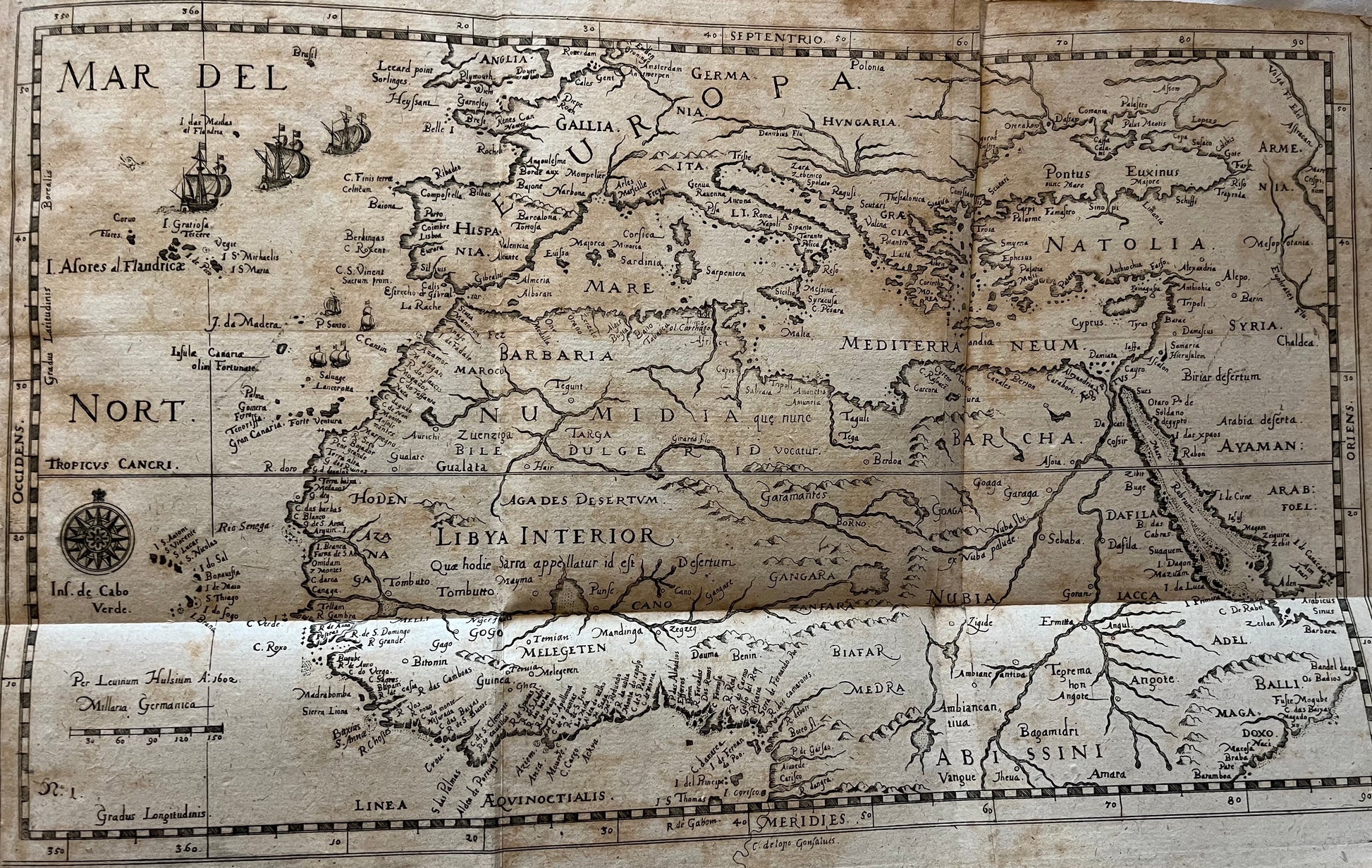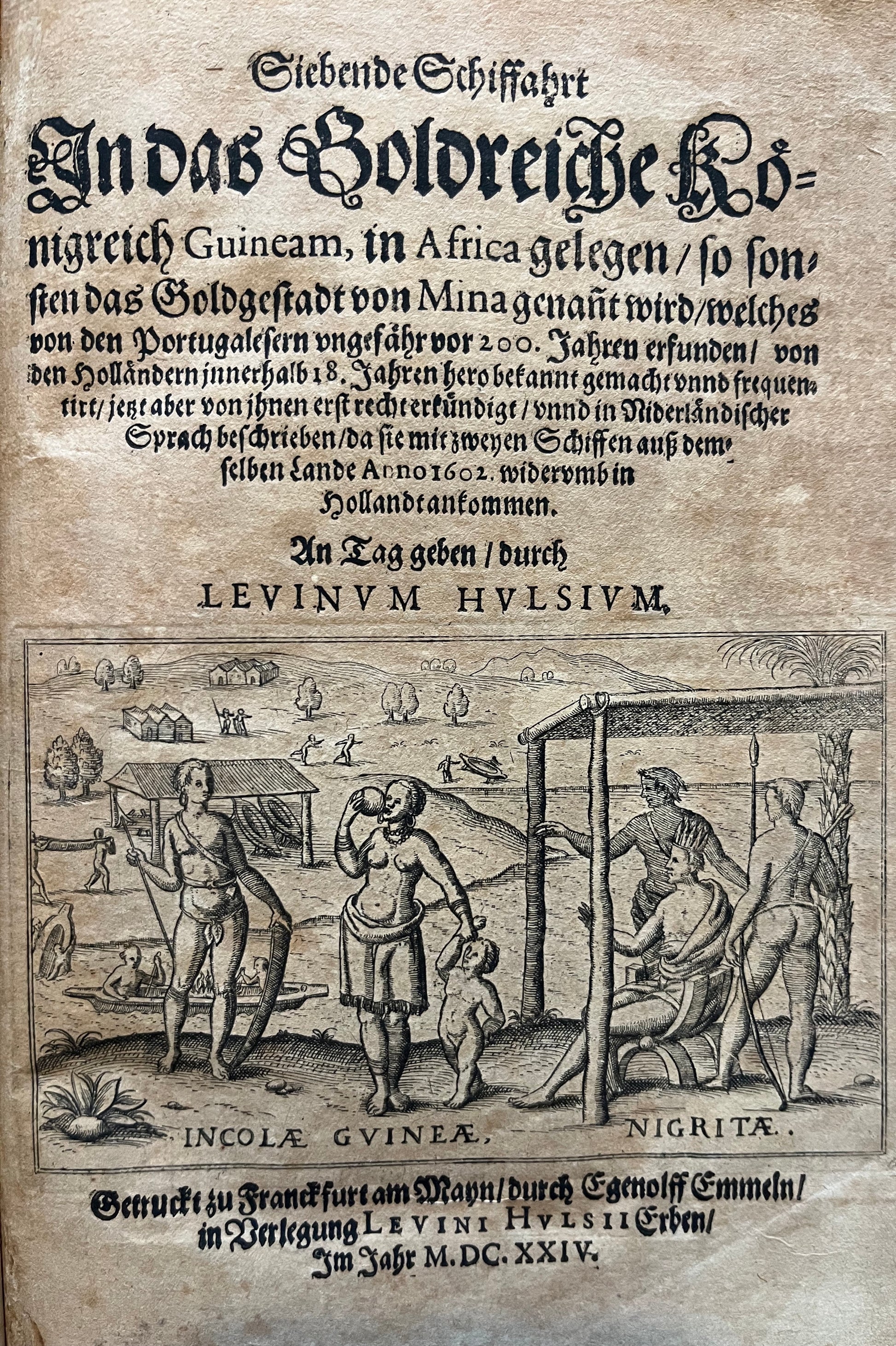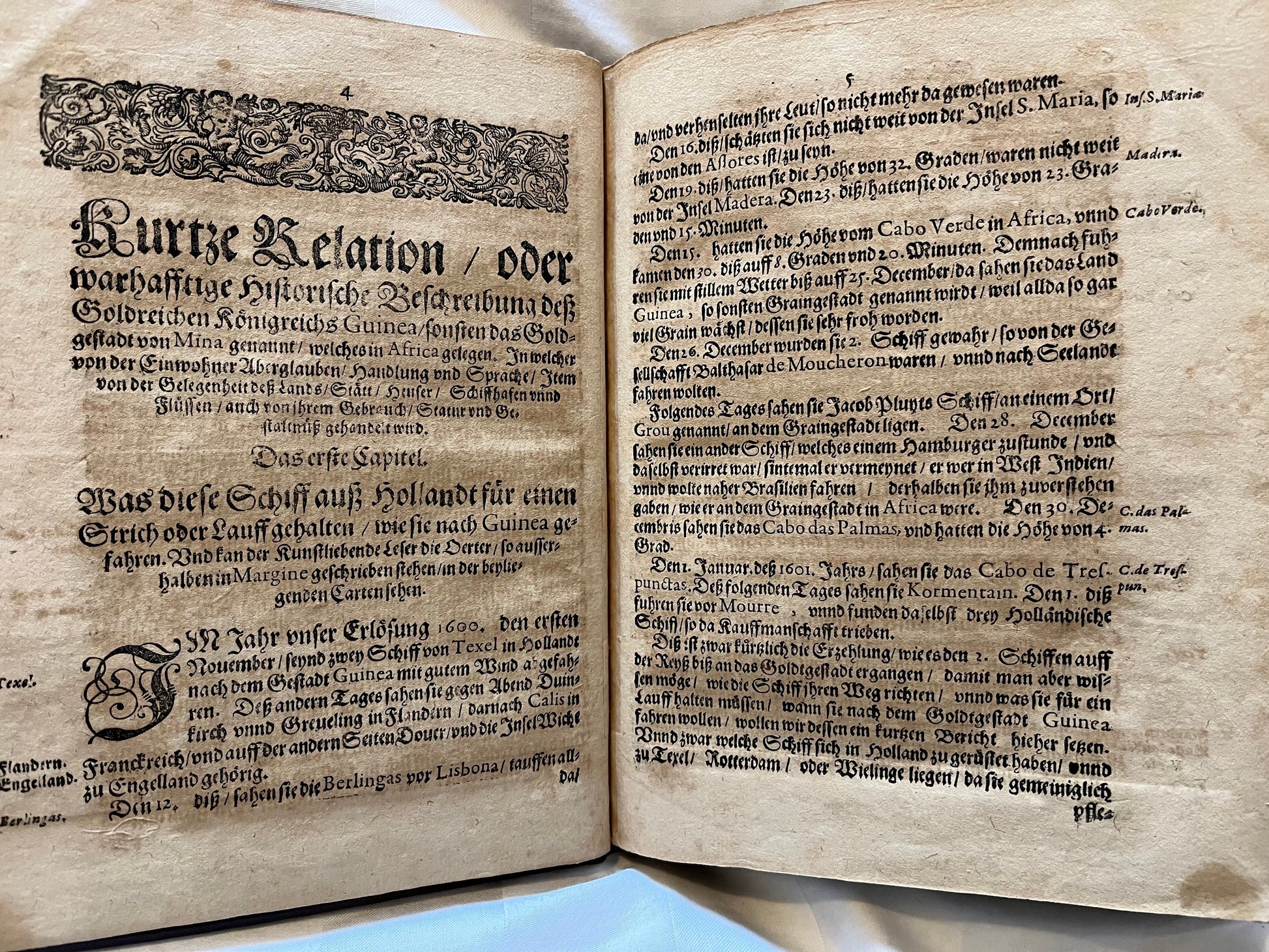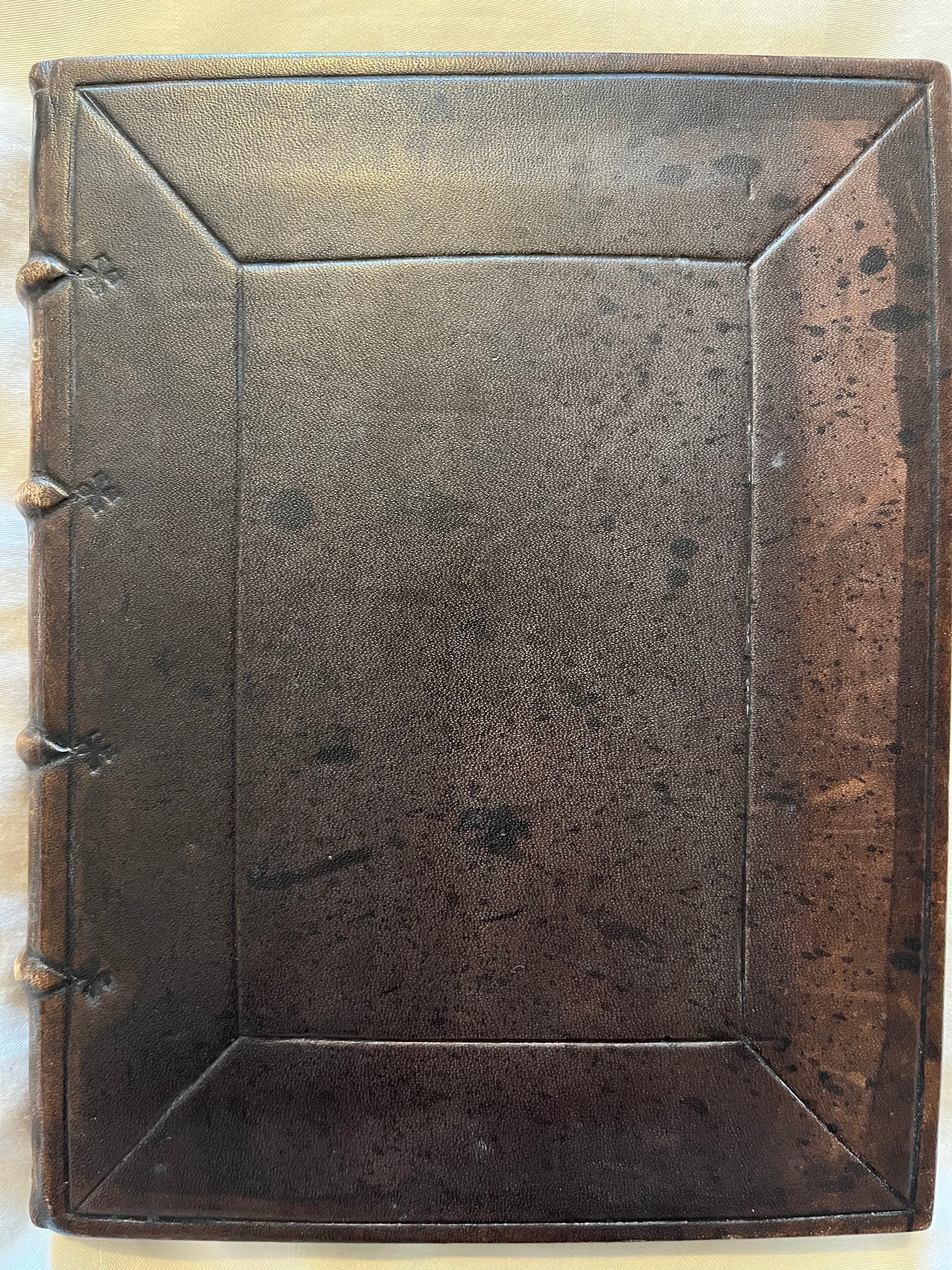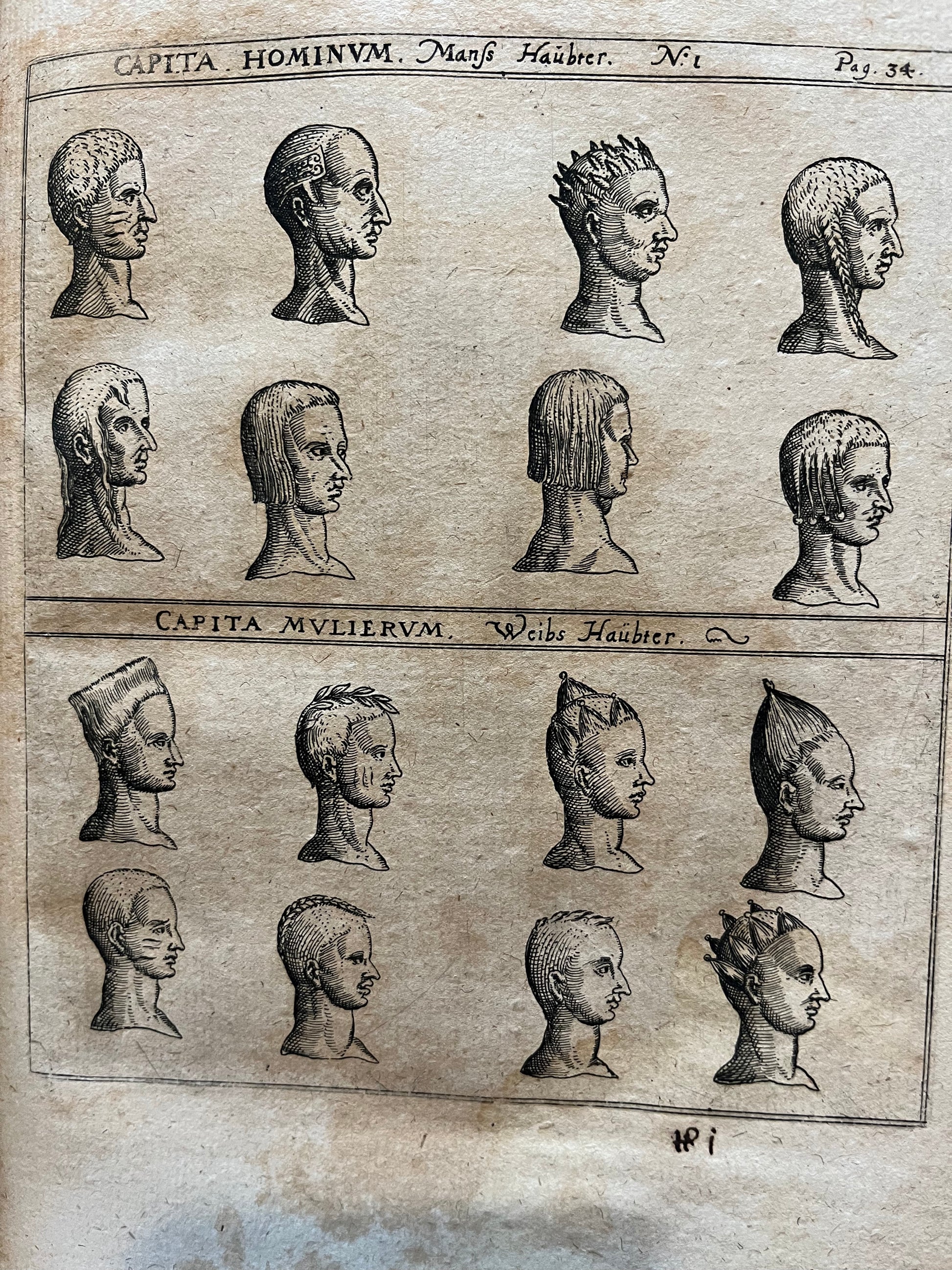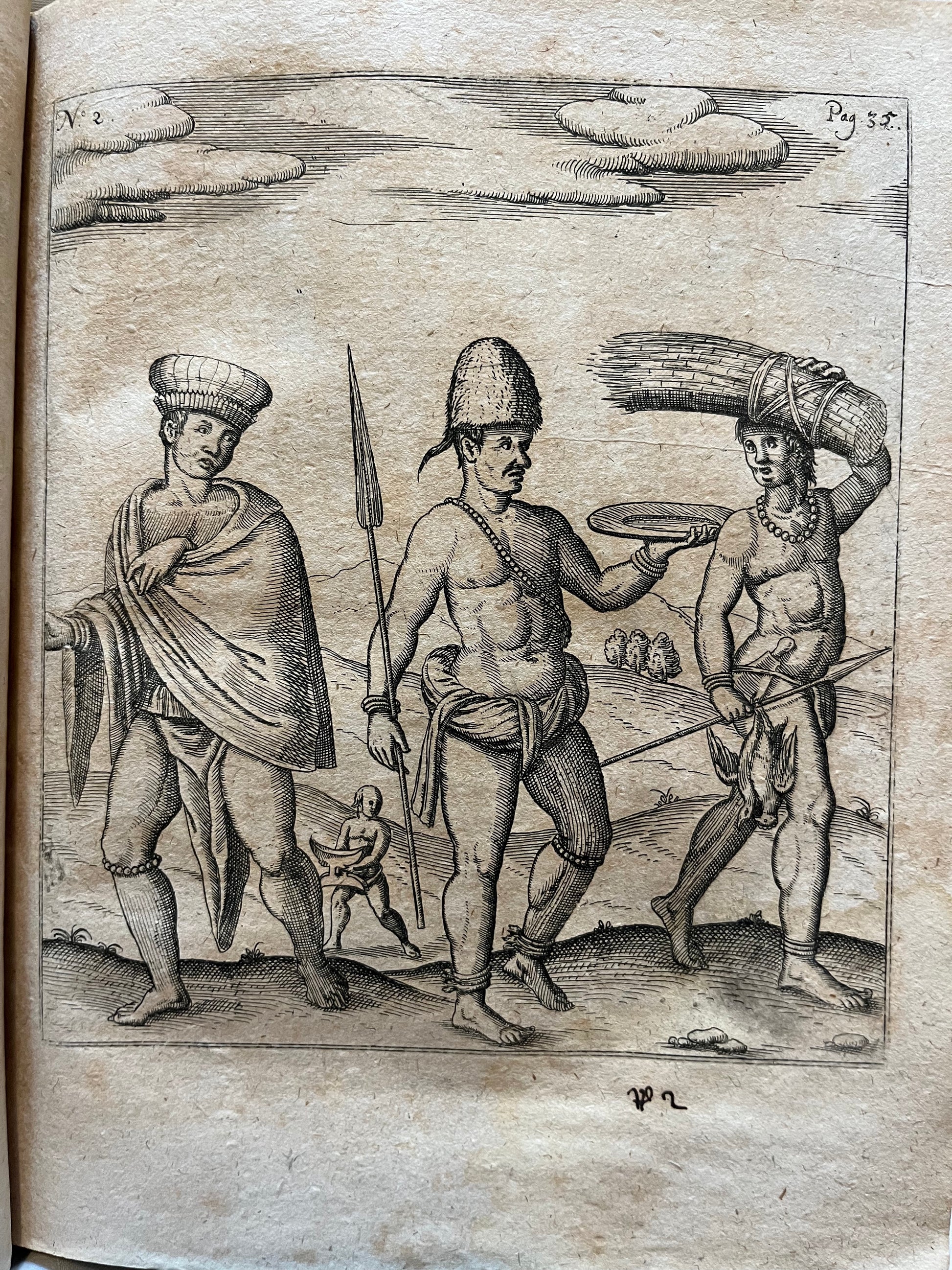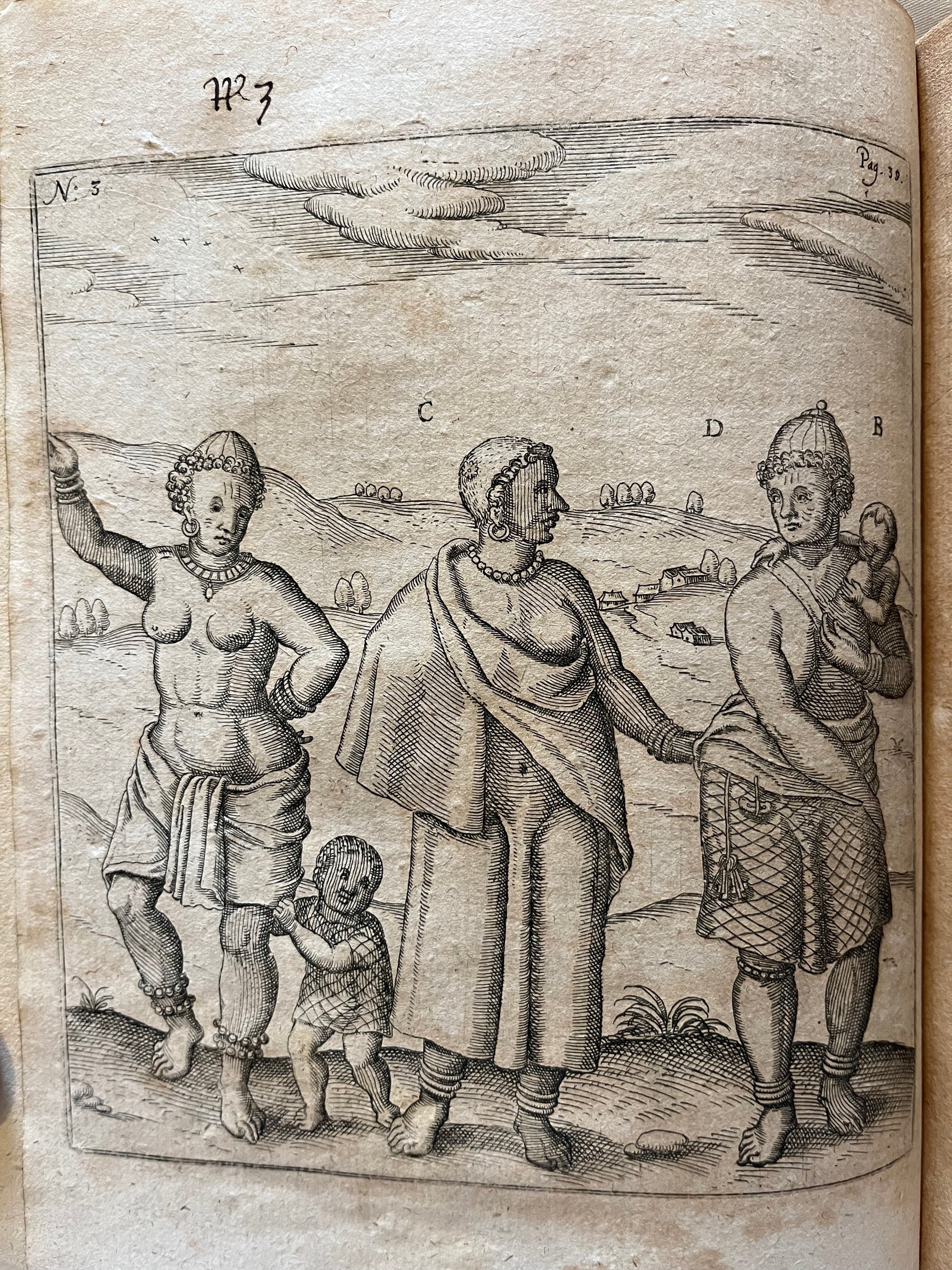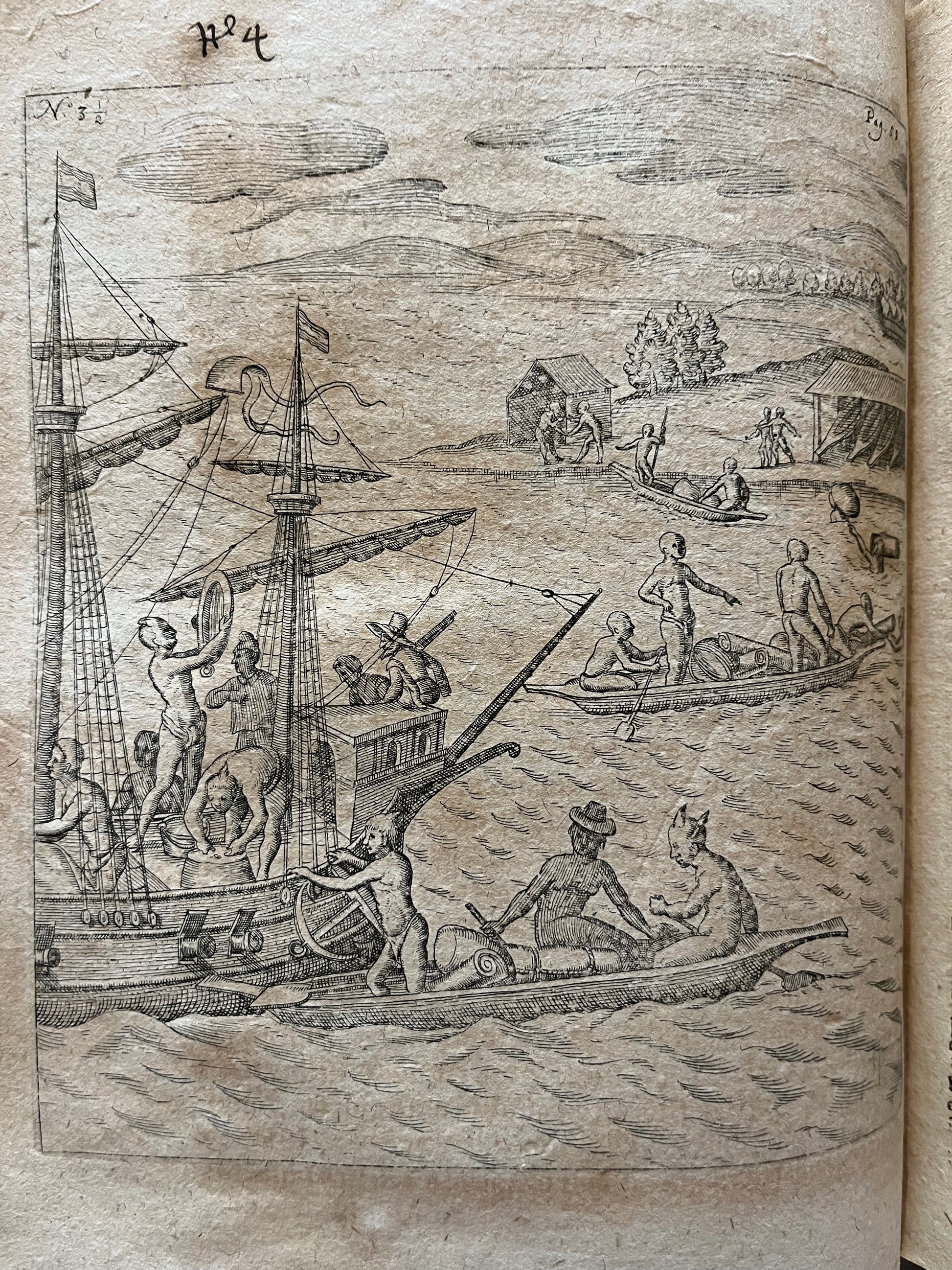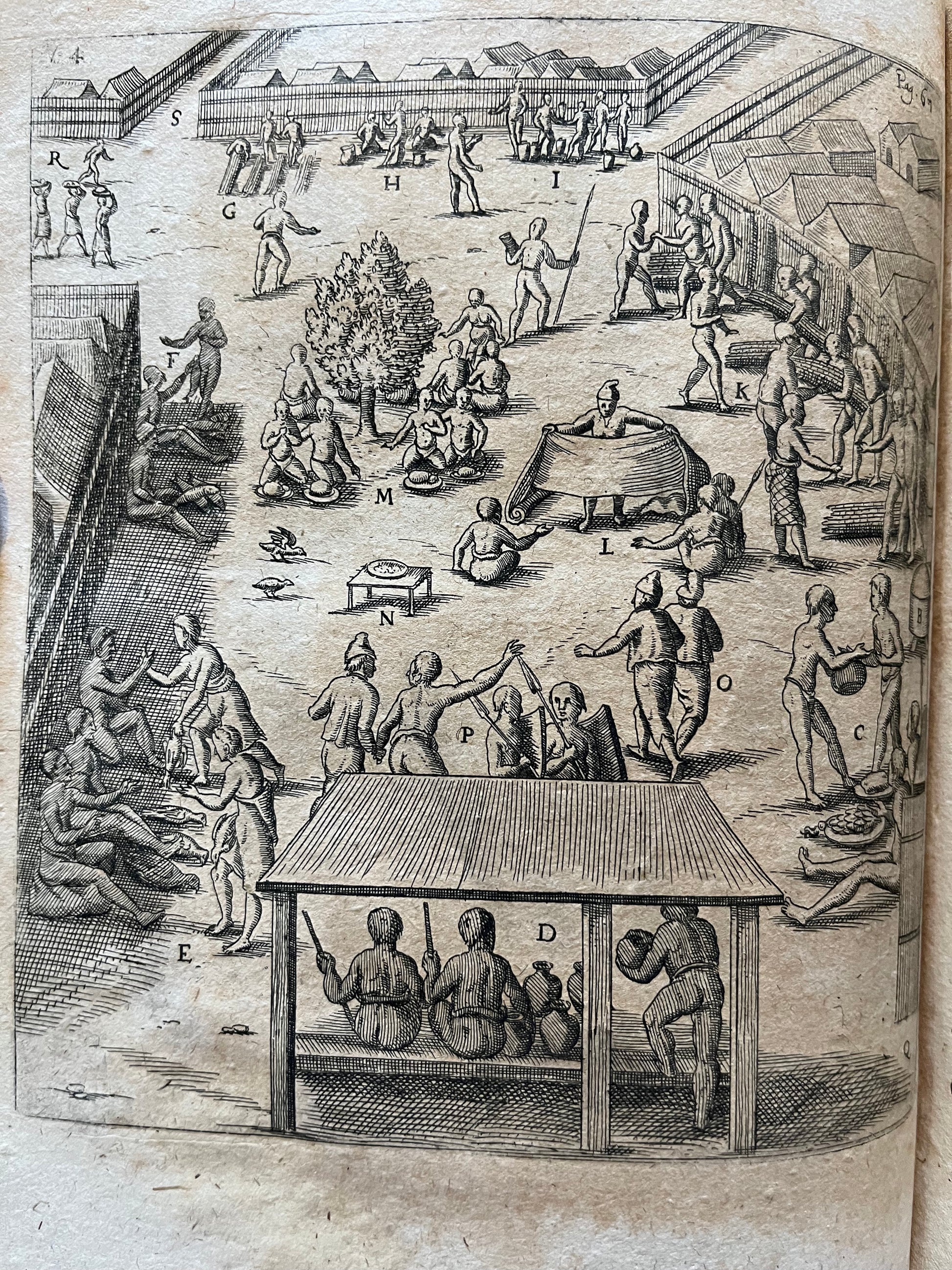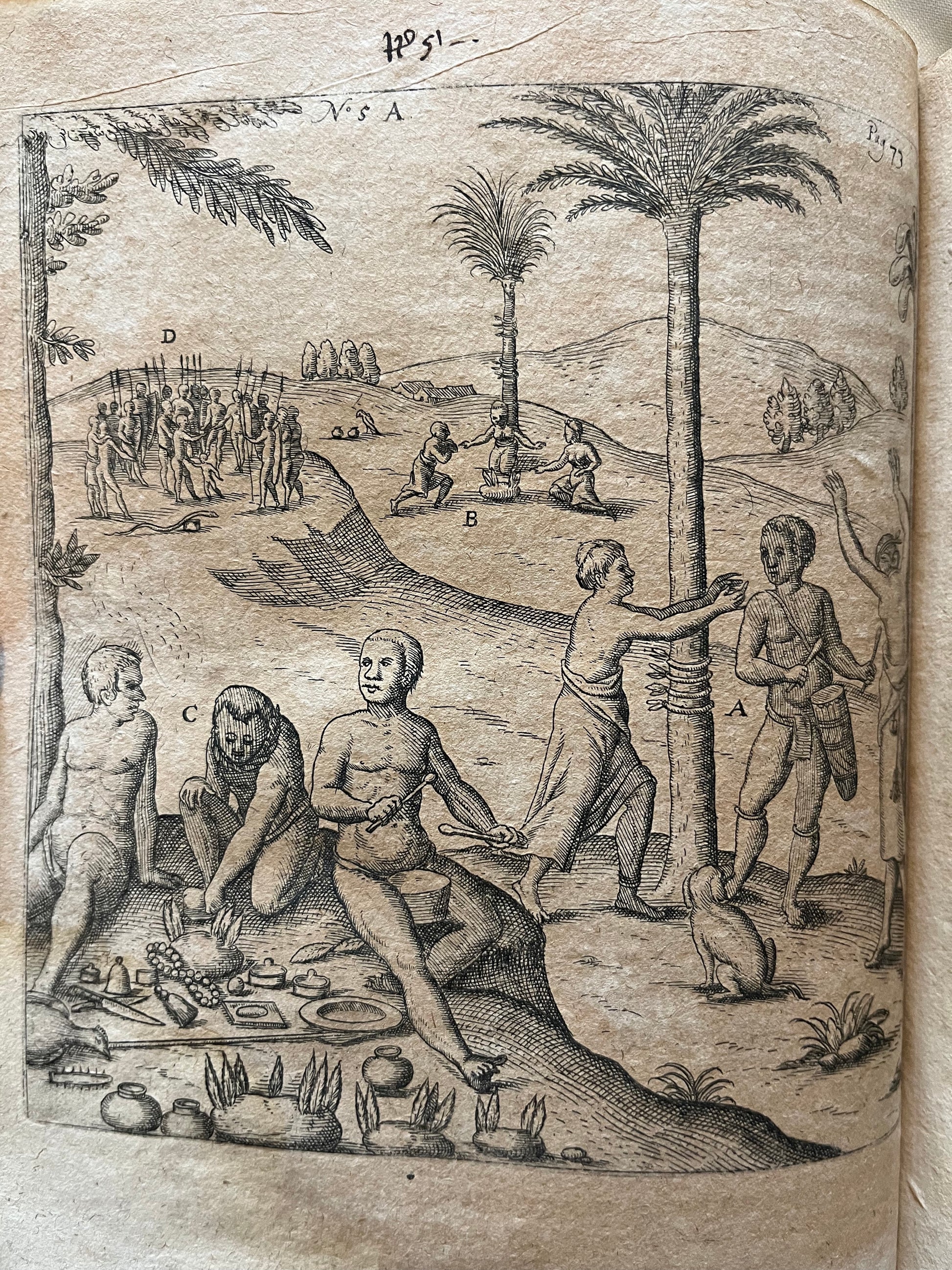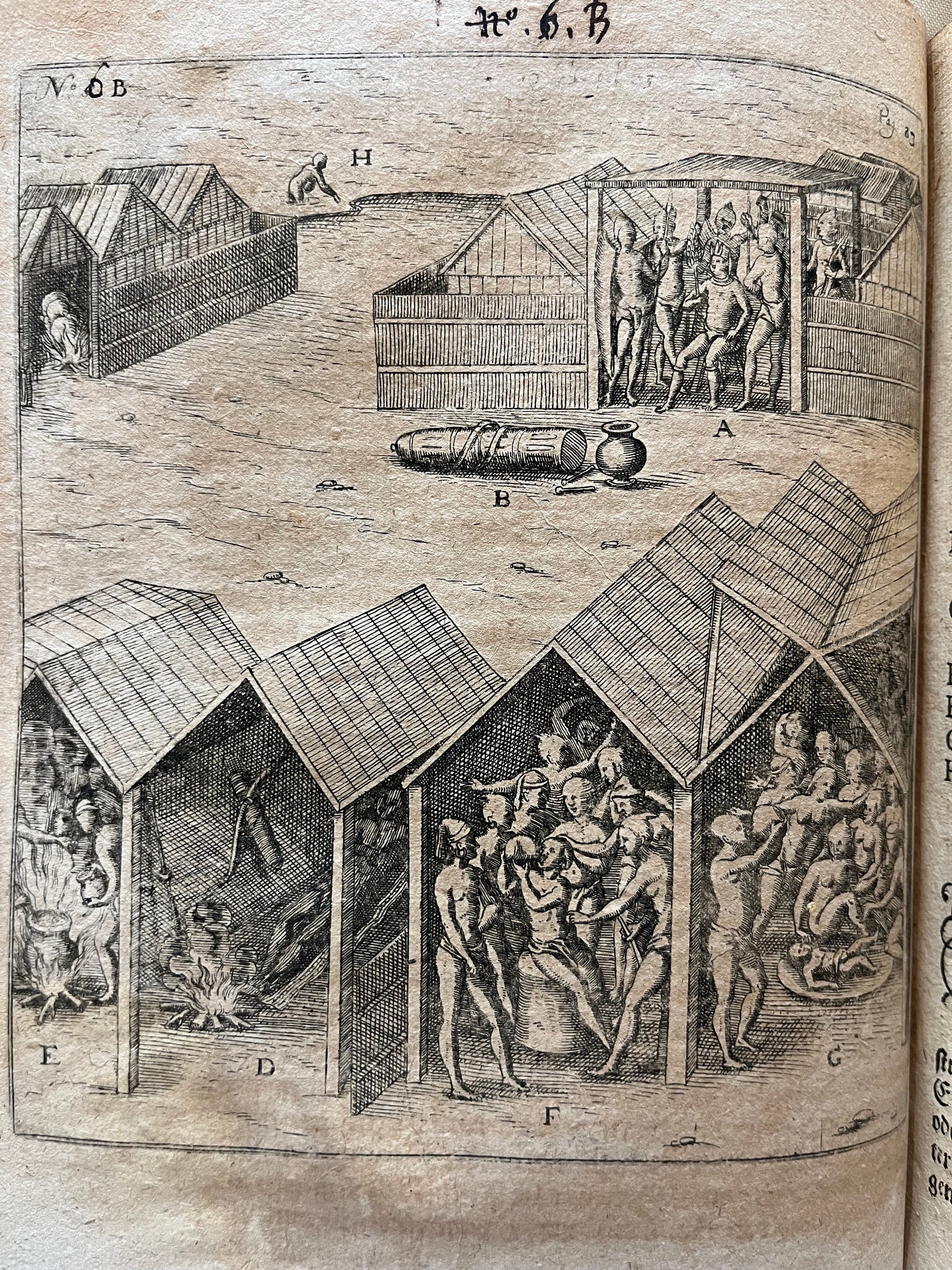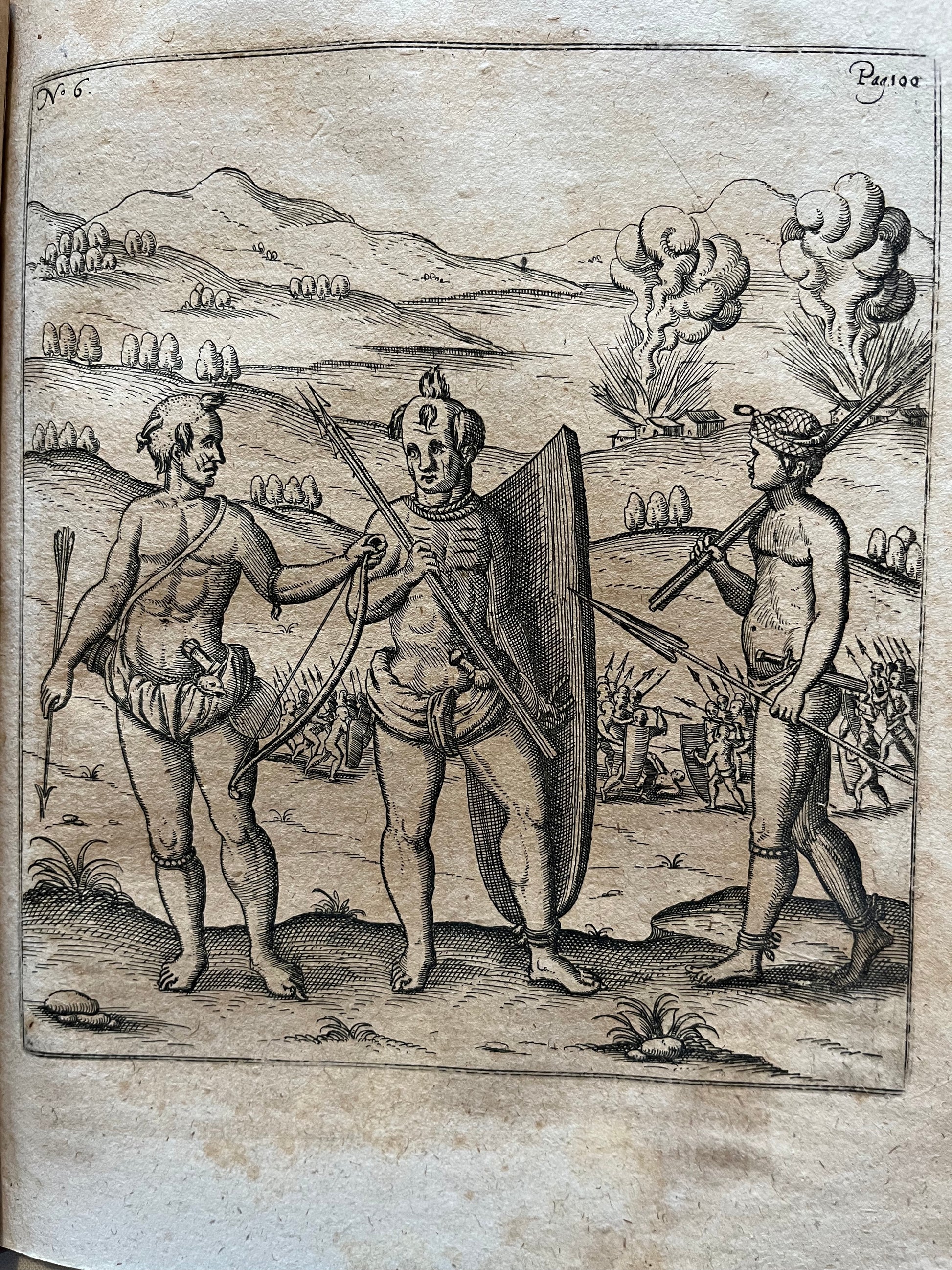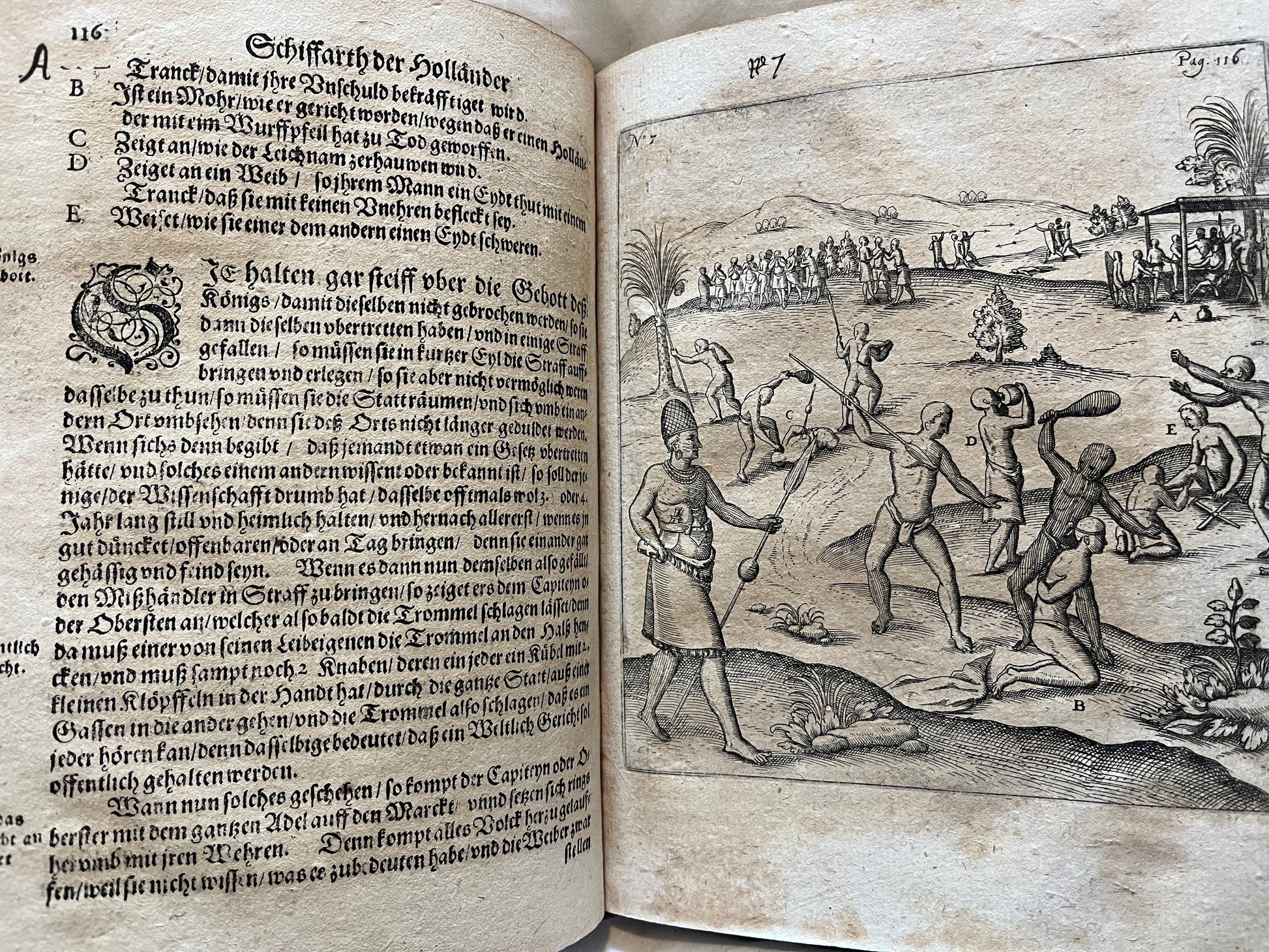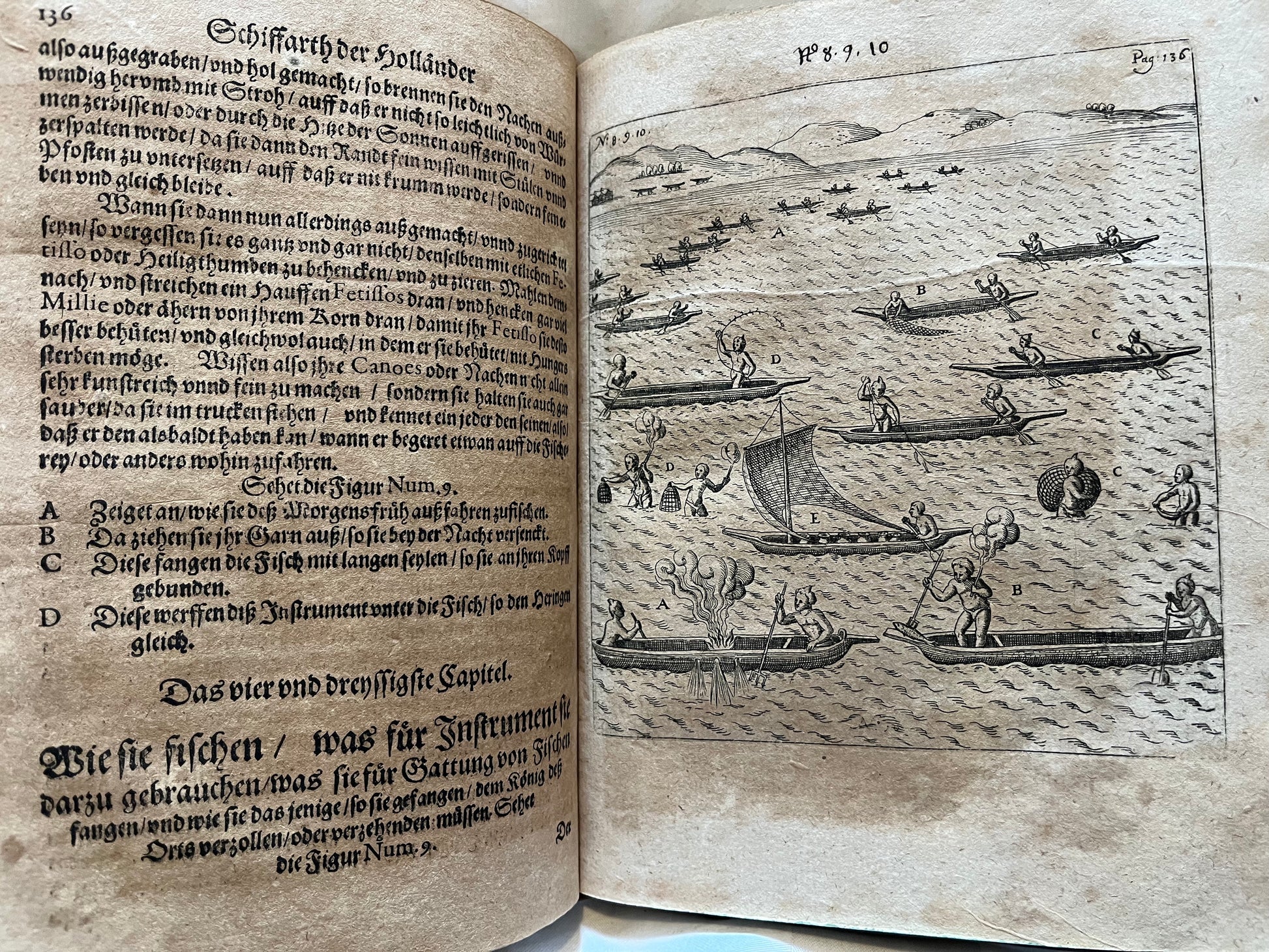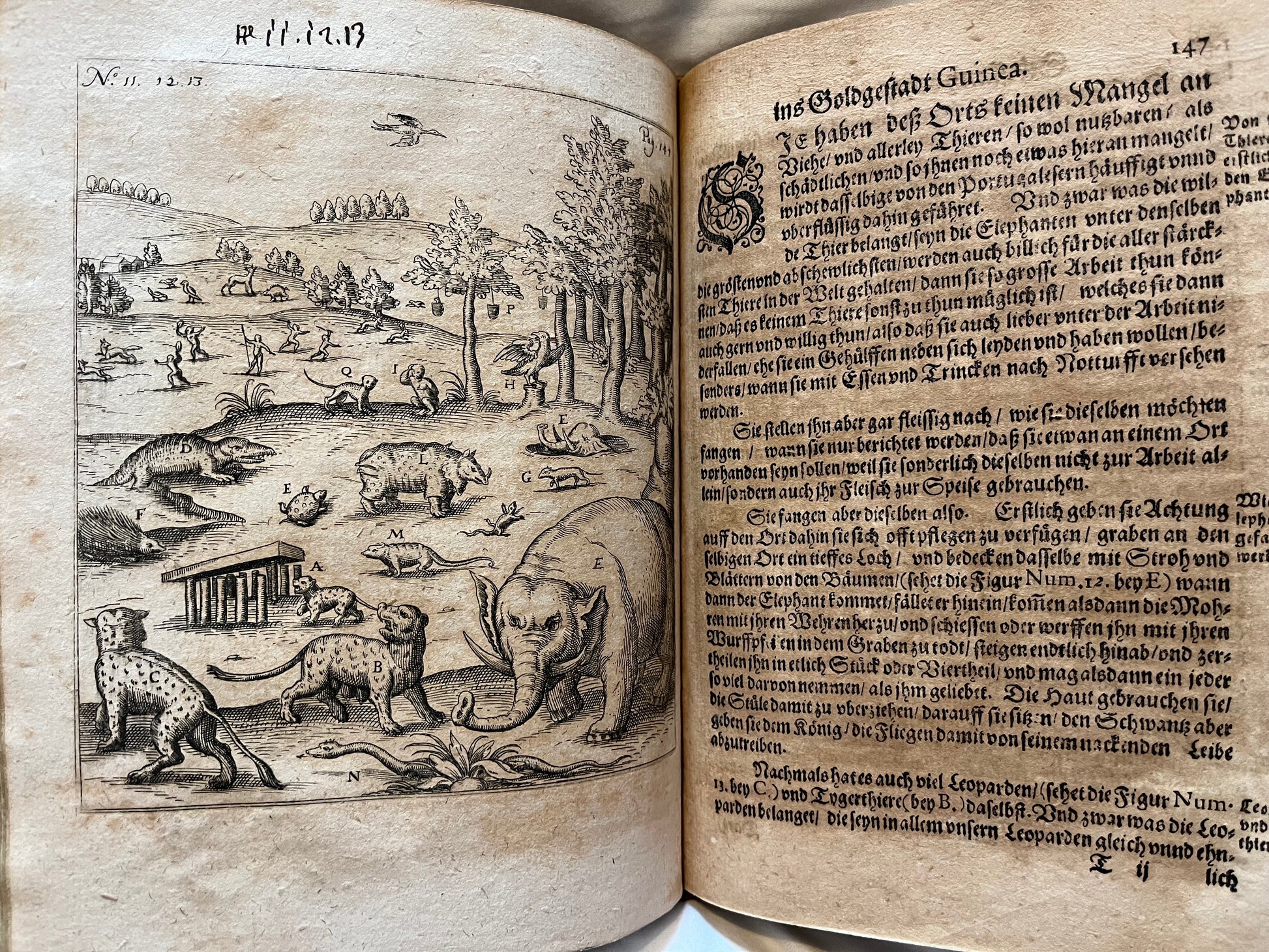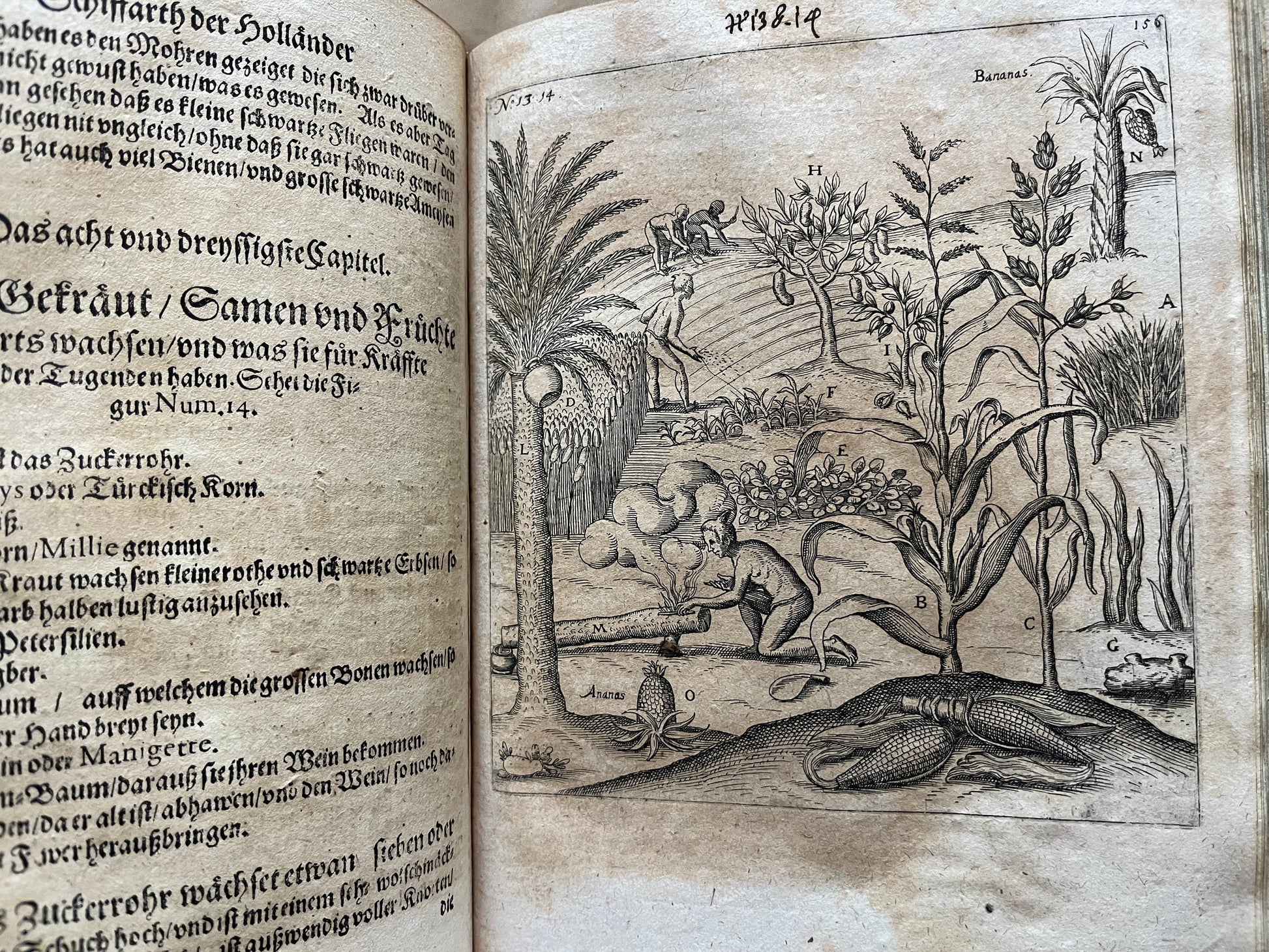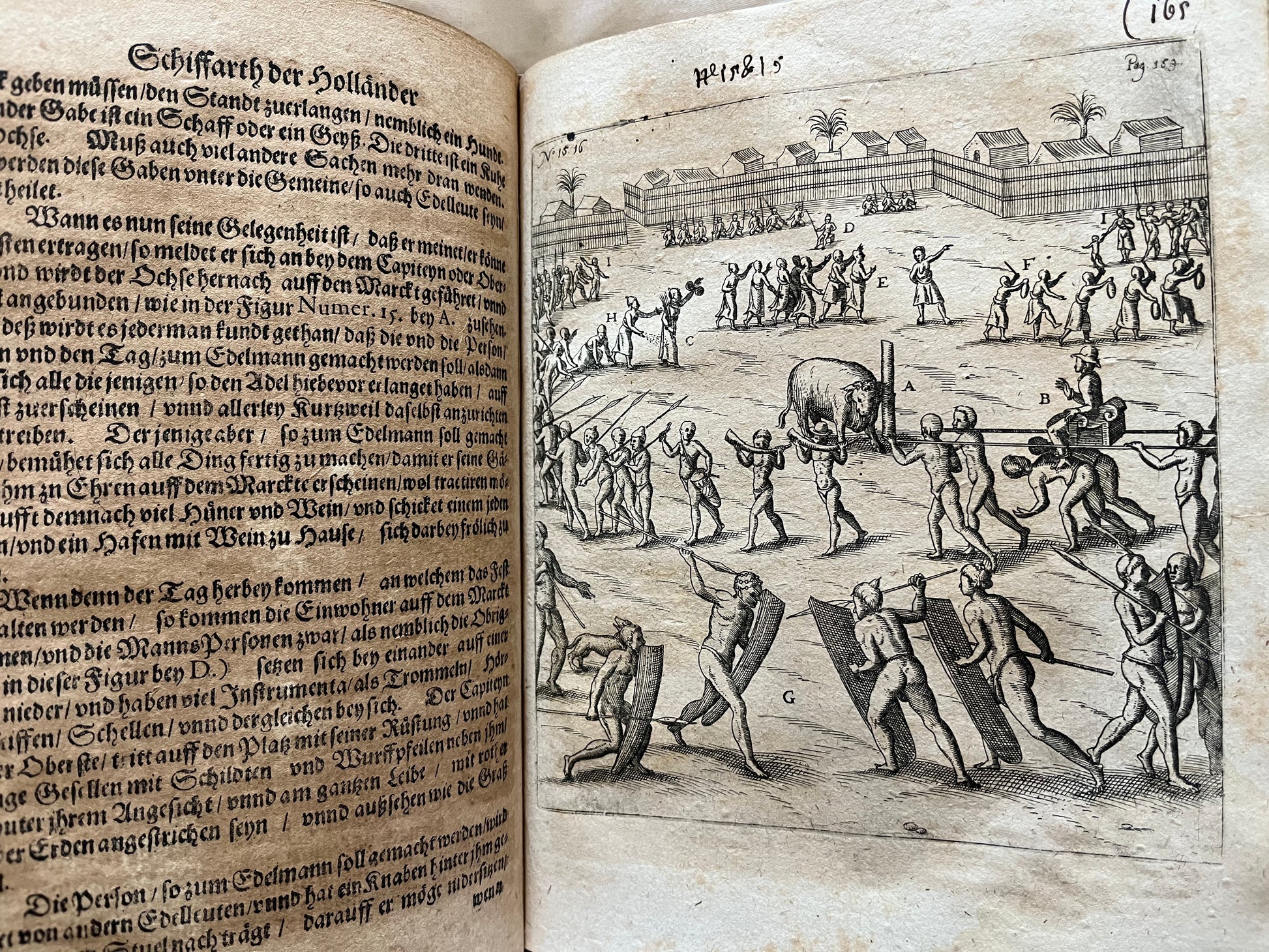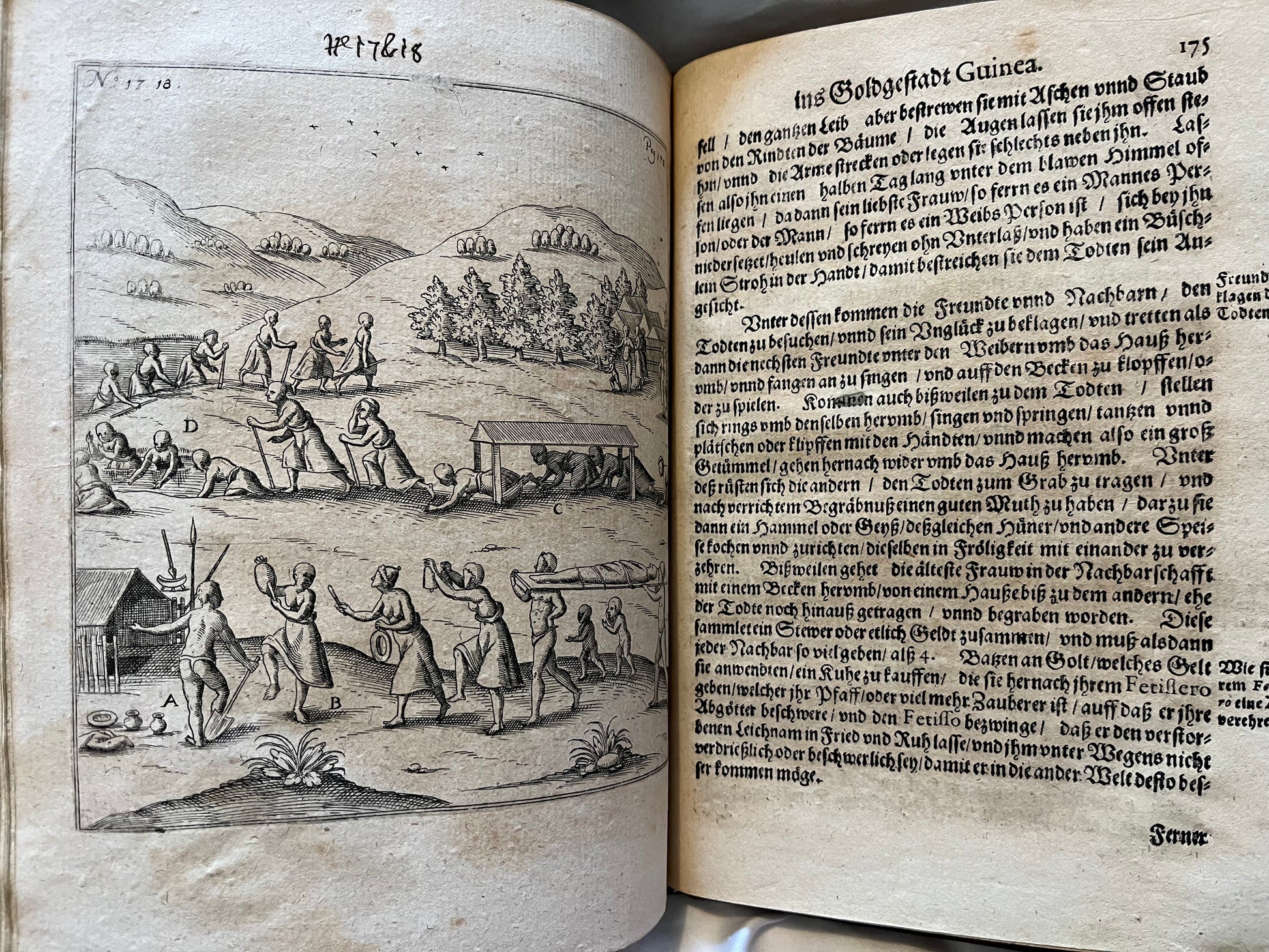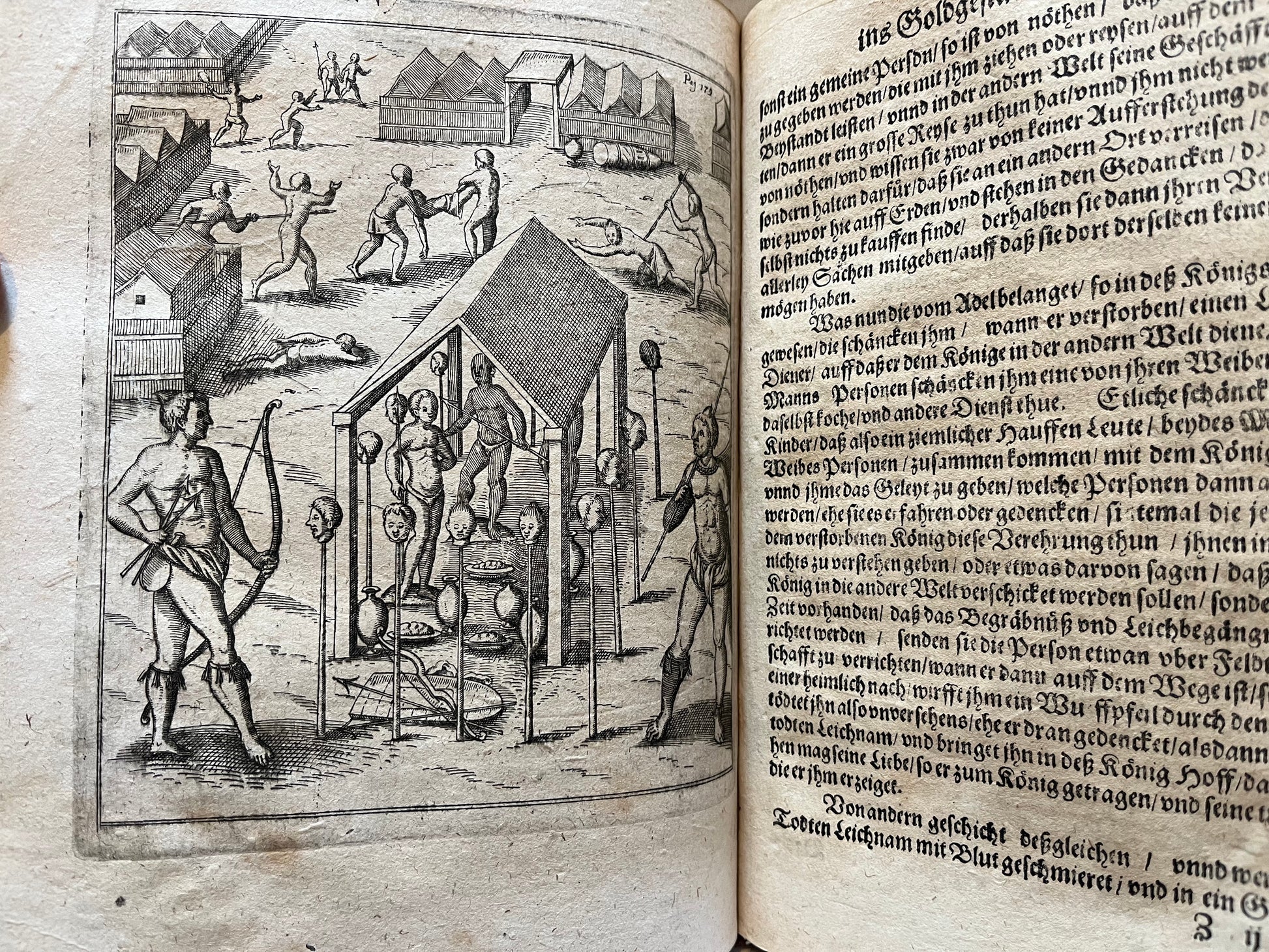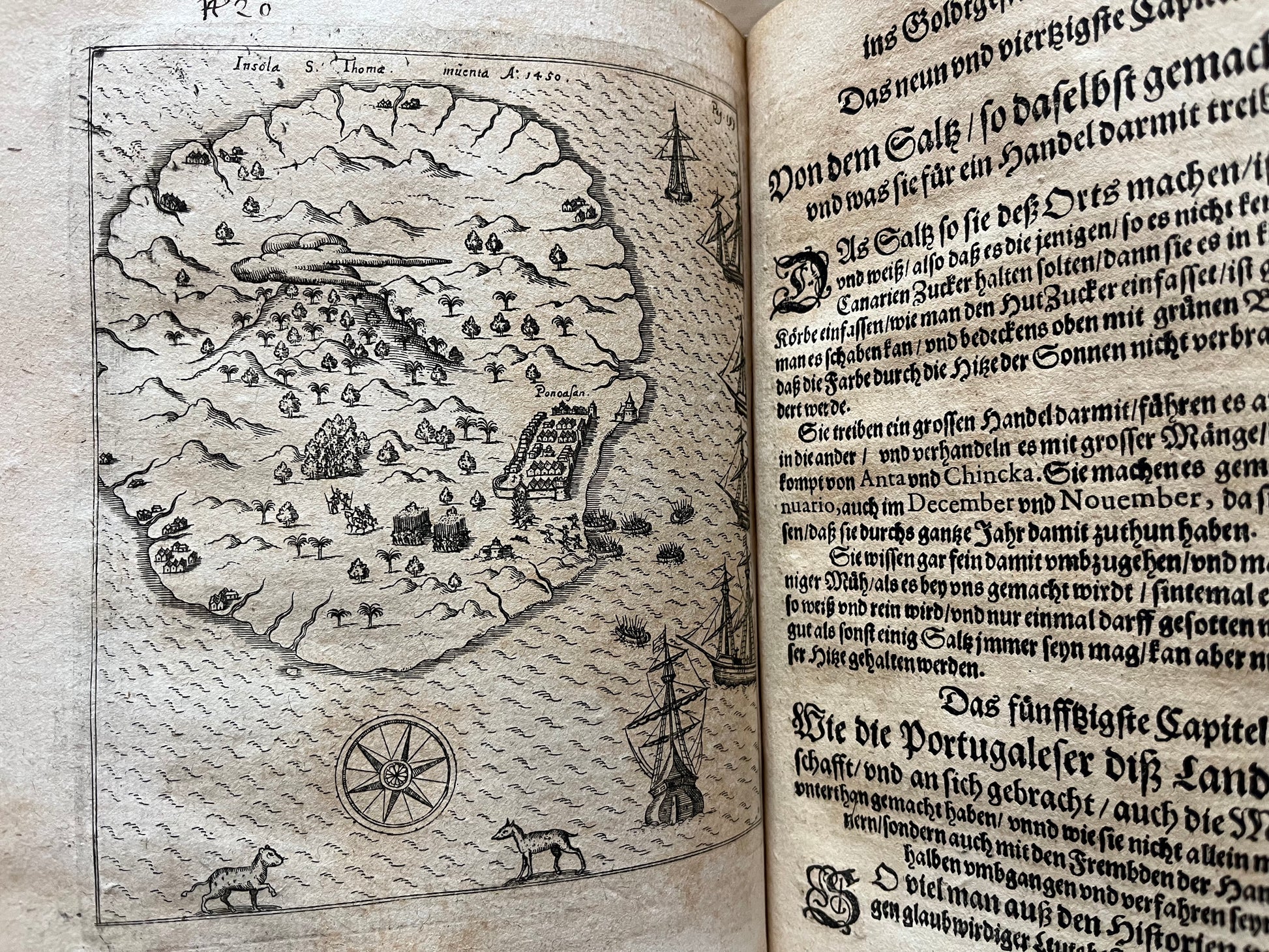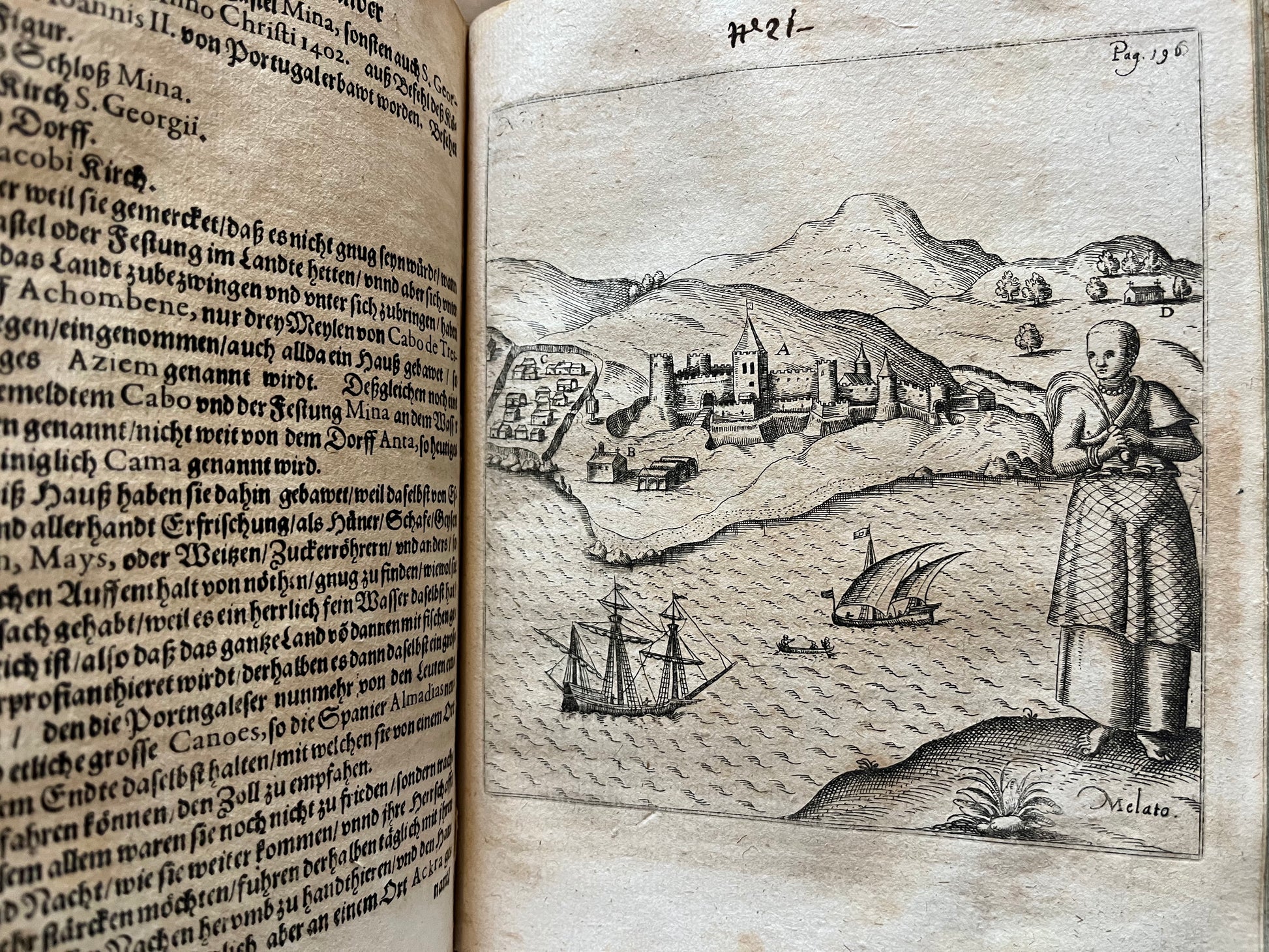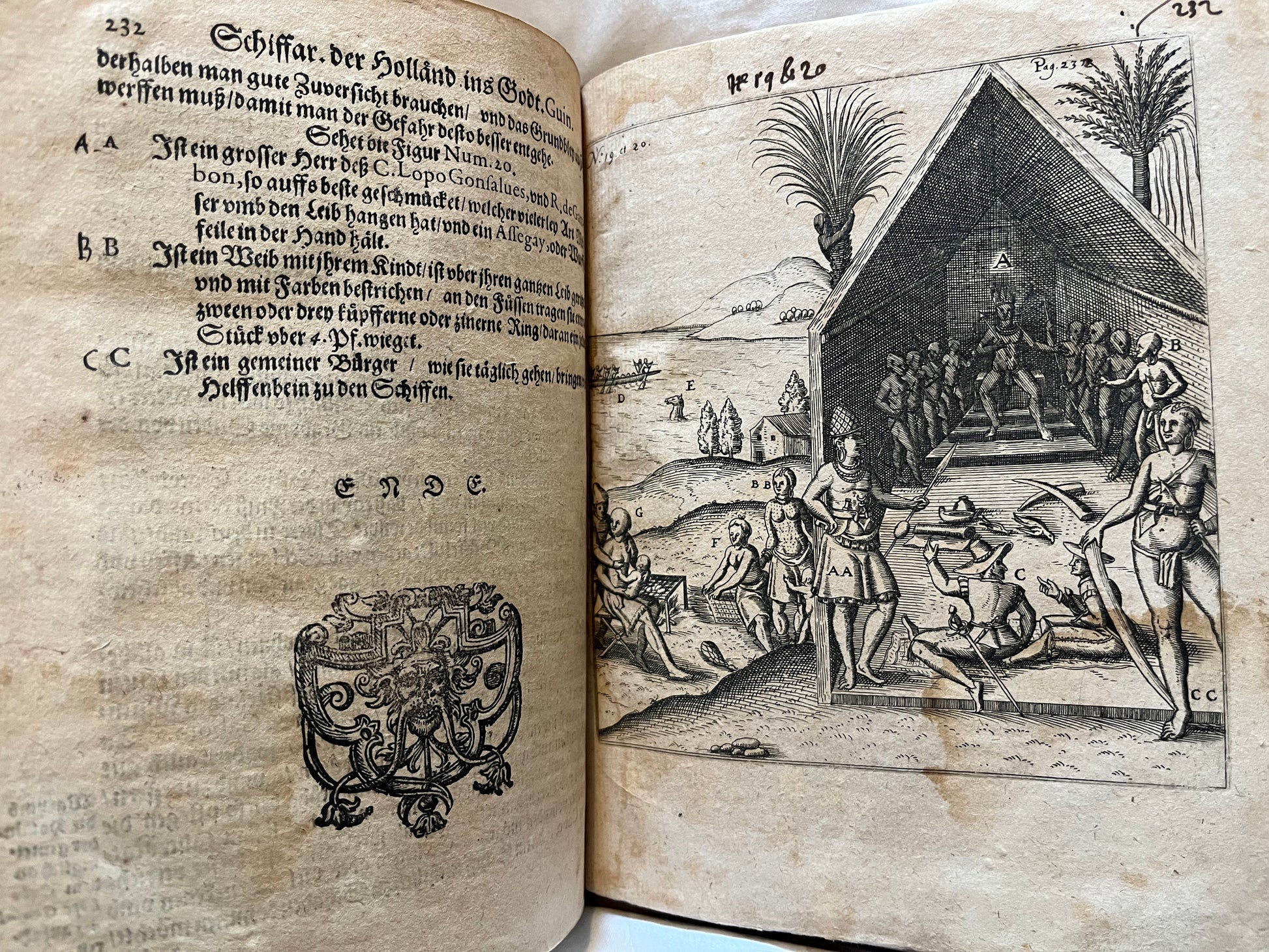De Bry Rare Books
West Africa - "Siebende Schiffahrt. In das goldreiche Königreich Guineam, in Africa gelegen..." - Hulsius - 1624 - Pieter de Marees
West Africa - "Siebende Schiffahrt. In das goldreiche Königreich Guineam, in Africa gelegen..." - Hulsius - 1624 - Pieter de Marees
Couldn't load pickup availability
"Siebende Schiffahrt. In das goldreiche Königreich Guineam, in Africa gelegen, so sonsten das Goldgestadt von Mina genan[n]t wird, welches von den Portugalesern ungefähr vor 200 Jahren erfunden. Frankfurt a. M.: Hulsius Erben 1624"
-Rare 3rd edition
-Complete - Title page, Folding Map, Pages 1-232, 19 (of 19) plates
-20 x 15 cm
-Modern full leather binding
-Good condition but significant toning to pages. Hulsius publications were produced for a mass readership and therefore often used cheaper paper. For this reason few copies survive as they were often not kept. They are much rarer than the more lavishly produced editions by the De Bry family which were aimed at the aristocracy and rich merchants.
-All Hulsius parts are rare, and those that survive frequently are lacking plates or maps
Pieter de Marees’s Beschrijvinghe ende Historische verhael van het Gout Koninckrijck van Guinea (1602) is the most important European work on West Africa of the seventeenth century. A Dutch merchant sailing from Enkhuizen, little else is known about De Marees apart from this account of his voyage to the Gold Coast around 1597. Written for merchants and policy makers in the newly independent Dutch Republic, it was soon translated into Latin, French, and German, influencing and shaping European views of Africa. Images copied from his illustrations would be used by the cartographer Blaeu, and other illustrators, long into the 17th Century. The work describes the Akan people of modern-day Ghana and the Gold Coast, offering a remarkably detailed view of society. It includes descriptions of political and social structures, trade, religion, and even local hairstyles, memorably illustrated in a famous plate. De Marees’s description of the Akan remains a key primary source for historians and anthropologists today. Being a merchant, he focused on the region’s valuable commodities—gold, ivory, and pepper—and included a phrasebook to aid future traders. His observations on war captives being held as slaves within African societies predate, and in some ways anticipate, the transatlantic slave trade that would expand later in the seventeenth and eighteenth centuries.
USTC - 2135808 - 8 copies only (none outside Europe or in North America)
